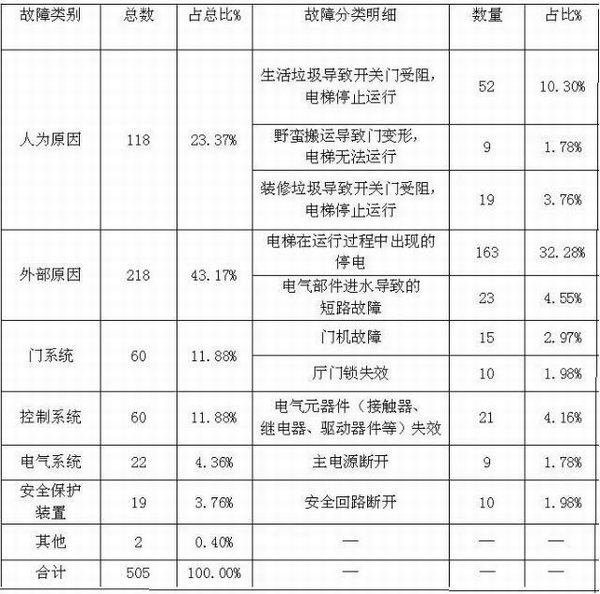Elevators have become an essential vertical transportation tool for people's daily life and travel, and with the frequent use of elevators, malfunctions have also increased. Especially when trapped in an elevator, it can easily trigger panic and tragic events. What is the reason for being trapped in an elevator?
Taking Jinan City as an example, relevant statistical data shows that from July 1 to September 30, the Jinan Elevator Safety Operation Monitoring Center received a total of 9299 phone calls from citizens, dealt with a total of 856 elevator failures, including 505 trapped faults and 351 non trapped faults, and rescued 1164 trapped people.
In the handling of trapped faults, there were 502 first level rescue incidents, accounting for 99.41% of the total disposal volume; Seven second level rescue operations were carried out (including four cases where first level rescue units were dispatched while second level rescue units were dispatched due to large-scale power outages), accounting for 1.39% of the total disposal volume. The "three minute response rate" of the maintenance unit is 100.00%, and the "thirty minute arrival rate" is 99.20%. The average time for rescue personnel to arrive at the scene is 10.66 minutes, and the average time for on-site rescue is 5.90 minutes, far below the national standard of 30 minutes for arrival.
Among the difficulties encountered in handling human malfunctions, the top three reasons are: 218 external causes, accounting for 43.17% of the total number of malfunctions; 118 cases were caused by human factors, accounting for 23.37% of the total number of faults; There have been 60 incidents of door system failures, accounting for 11.88% of the total number of failures. The above three reasons account for 78.42% of the total number of people trapped in malfunctions.
52 incidents of trapped people caused by obstruction of opening and closing doors due to household waste, accounting for 10.30% of the total number of trapped people; 19 cases of trapped people's faults caused by obstructed door opening and closing due to decoration waste, accounting for 3.76% of the total number of trapped people's faults; There were 163 cases of trapped faults caused by power outages due to external reasons, accounting for 32.28% of the total number of trapped faults; 23 cases of trapped faults were caused by water ingress and short circuit in electrical components, accounting for 4.55% of the total number of trapped faults.

Do you understand what causes elevator malfunctions and being trapped after seeing the above data? I hope that friends can take good care of elevators when traveling and ensure the safety of their lives and property.







